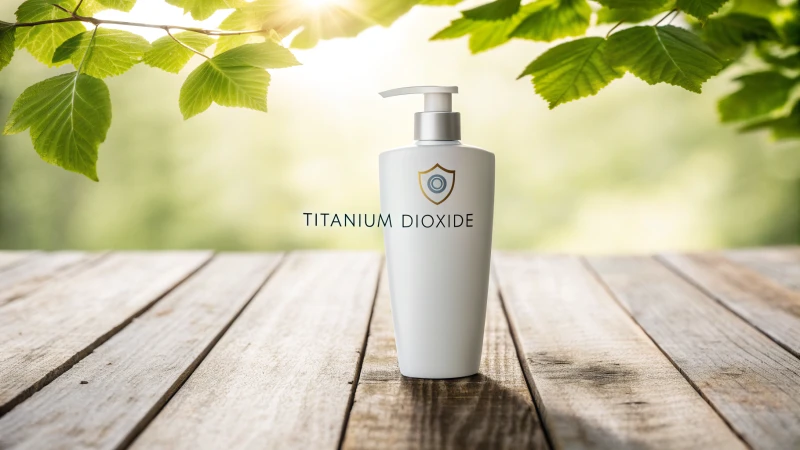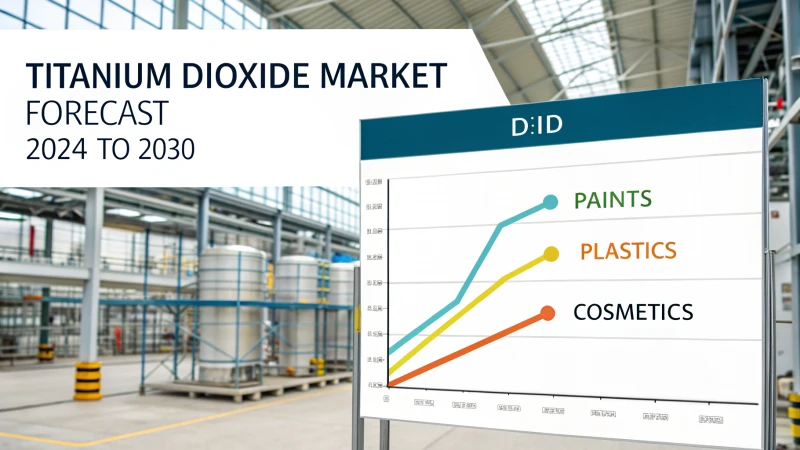
Do you ever think about the big players in the titanium dioxide industry? Let’s explore this topic together!
The top producers of titanium dioxide (TiO2) are Tronox, Chemours and Lomon Billions. They mostly operate in North America, Europe and Asia. These companies serve different industries like coatings, plastics and cosmetics. They shape the worldwide supply chain.
When I first looked into the titanium dioxide market, I was surprised by the connections. Leading manufacturers like Tronox, Chemours and Lomon Billions do more than produce TiO2. They shape whole industries! These firms provide for areas such as paints and cosmetics. Their impact spreads across North America, Europe and Asia. Learning about these key companies is essential for anyone wanting to understand this lively industry. It is truly important.
[claim claim=”Tronox is a leading manufacturer of titanium dioxide.” istrue=”true” explanation=”Tronox is recognized as one of the top manufacturers in the titanium dioxide industry, contributing significantly to the global market.”]
[claim claim=”Titanium dioxide is primarily used in the automotive industry.” istrue=”false” explanation=”Titanium dioxide is mainly utilized in coatings, plastics, and cosmetics, not specifically in automotive applications.”]
What Are the Key Applications of Titanium Dioxide?
Ever wondered how a simple chemical affects so much in our daily lives? Titanium dioxide (TiO2) plays a vital role. It quietly supports many industries. Let’s explore its major uses!
**Titanium dioxide (TiO2) finds use in many industries, such as coatings, plastics, paper, cosmetics and food. It brightens, adds opacity and provides UV protection. TiO2 plays a key role in everyday products like paints, skincare items and snacks. Let’s explore its applications꞉
- Coatings and Paints
Titanium dioxide turns dull walls into vibrant canvases. Its excellent opacity and brightness are highly valued in coatings and paints. Manufacturers achieve stunning colors with fewer paint layers. This means rich hues with fewer strokes. A wonderful outcome!
TiO2 is important for architectural, automotive and industrial paints. Its UV protection helps colors stay vibrant. Those colors last longer under the sun. For more on TiO2 in coatings, check the benefits of TiO2 in coatings.
- Plastics and Polymers
Titanium dioxide makes packaging materials and toys brighter. In plastics, TiO2 is like a magical tool. It enhances whiteness and brightness. Something so small can really impact product appeal!
Here’s more on TiO2’s importance in different plastic uses꞉
- Paper Products
Titanium dioxide boosts the brightness and opacity of paper products. TiO2 helps create high-quality, luxurious paper. Have you seen a glossy magazine? That attractive finish is from TiO2!
TiO2 dramatically improves the look of coated paper and premium printing materials. For more insights on TiO2 in paper, explore this detailed analysis.
- Cosmetics and Personal Care
Titanium dioxide is crucial in cosmetics. It whitens and reflects UV rays. TiO2 is a popular choice for sunscreens and foundations. It’s non-toxic, which reassures me, especially for sensitive skin.
TiO2 provides a matte finish without clumping. This enhances beauty product quality. For more on TiO2 in cosmetics, explore the use of TiO2 in cosmetics.
- Food Industry
Titanium dioxide appears in food as an additive (E171). It whitens confectionery, dairy products and sauces. I was amazed something so ordinary improves snack appeal!
TiO2 is generally considered safe, yet its use sparks safety discussions. For a better understanding of TiO2 in food, check this informative resource.
Every TiO2 application highlights its versatility and importance. It adds vibrancy to paint and enhances food quality. TiO2 is a truly remarkable compound deserving of recognition.**
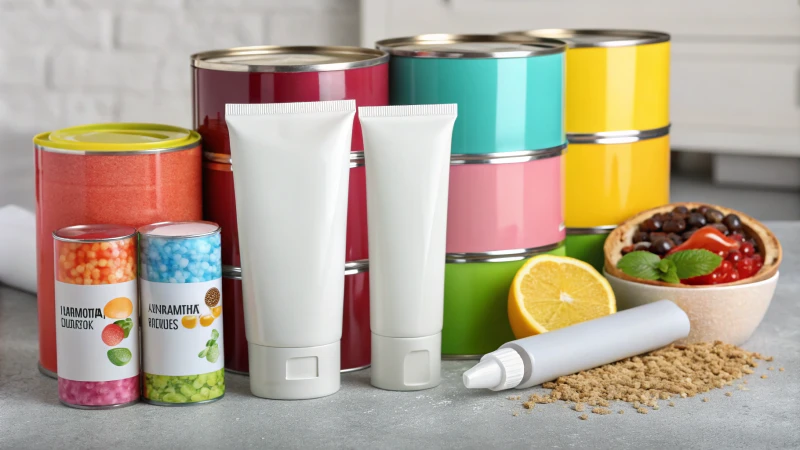
Main Content
Titanium dioxide (TiO2) is very important in many industries. Factories use it in coatings, plastics, paper, cosmetics and food. Its unique properties increase brightness and opacity. TiO2 also offers strong UV protection. People regard it as really invaluable in different applications. I have personally witnessed how versatile this compound is.
1. Coatings and Paints
Titanium dioxide is widely recognized for its exceptional opacity and brightness, making it a preferred pigment in the coatings and paints industry. Its ability to provide excellent coverage allows for reduced paint thickness while maintaining vibrant color quality.
For instance, TiO2 is often utilized in architectural coatings, automotive finishes, and industrial paints. The effectiveness of TiO2 in these applications is supported by its UV protection properties, which enhance durability. You can learn more about the benefits of TiO2 in coatings1.
2. Plastics and Polymers
In the plastic industry, titanium dioxide serves as a crucial additive that enhances the whiteness and brightness of products. It is commonly used in the manufacturing of various plastic goods, from packaging materials to consumer products.
The following table illustrates the significance of TiO2 in different plastic applications:
| Plastic Type | Application | Purpose of TiO2 |
|---|---|---|
| Polyethylene | Packaging films | Opacity and brightness |
| PVC | Building materials | UV resistance |
| Polypropylene | Consumer goods | Color enhancement |
3. Paper Products
Titanium dioxide is also essential in the paper industry, where it improves the brightness and opacity of paper products. By using TiO2, manufacturers can produce high-quality paper with better printing characteristics.
In applications like coated paper for magazines or high-end printing materials, TiO2 contributes to an appealing finish that enhances visual appeal. For more insights on TiO2’s role in paper production, check out this detailed analysis2.
4. Cosmetics and Personal Care
The cosmetic industry leverages titanium dioxide for its whitening properties and ability to reflect UV rays, making it a popular ingredient in sunscreens, foundations, and other skincare products. Due to its non-toxic nature, TiO2 is favored for use in formulations intended for sensitive skin.
Moreover, its ability to provide a matte finish without clumping enhances the aesthetic quality of beauty products. Discover more about the use of TiO2 in cosmetics3.
5. Food Industry
Interestingly, titanium dioxide finds its way into the food industry as a food additive (E171). It is employed primarily for its whitening properties in confectionery, dairy products, and sauces.
While TiO2 is generally recognized as safe, its use has sparked discussions regarding consumer safety and regulatory measures. To understand more about its implications in food products, visit this informative resource4.
[claim claim=”Titanium dioxide is primarily used in the food industry as E171.” istrue=”true” explanation=”TiO2, known as E171, is utilized in food for its whitening properties, especially in confectionery and dairy products.”]
[claim claim=”Titanium dioxide enhances the durability of automotive paints.” istrue=”true” explanation=”Due to its UV protection properties, titanium dioxide improves the durability and longevity of automotive finishes and coatings.”]
How Do Titanium Dioxide Manufacturers Ensure Quality Control?
Let’s explore the interesting world of titanium dioxide production! Manufacturers follow strict quality rules. These rules help us receive the finest products for our needs. Their processes are very careful and precise.
Titanium dioxide producers keep quality high by carefully inspecting raw materials. They conduct strict tests during production. Final products go through thorough evaluations. They follow international standards. They also actively gather customer feedback. Feedback helps improve QC processes. This is vital for quality.

Understanding Quality Control in Titanium Dioxide Production
Quality control (QC) in titanium dioxide (TiO2) production is more than a simple list of tasks. It represents a personal commitment to delivering high-quality products. TiO2 is used in many things, from paints to cosmetics. Manufacturers hold a great responsibility. They must ensure every step is crucial in creating a product that meets high standards.
-
Raw Material Inspection: Imagine a shipment arriving at the factory. Before anything else, the materials get checked carefully. It’s not just a routine task. Quality materials must enter the production line. Once, a single batch of bad raw materials stopped a whole project.
-
In-Process Testing: As TiO2 forms, samples come from different stages. Regular checks guarantee everything stays on track. Particle size is critical in coatings. I remember when a small mistake caused unexpected results. I learned from it.
-
Final Product Testing: The final product faces strict tests. Parameters like opacity, brightness and purity are closely examined. These tests meet both industry standards and customer expectations. It feels like a final exam for the product.
Standard Operating Procedures (SOPs) in QC
Manufacturers follow Standard Operating Procedures (SOPs) to keep operations smooth. SOPs describe specific QC processes that bring consistency and quality:
| Procedure | Description | Frequency |
|---|---|---|
| Raw Material Testing | Assessing incoming materials for compliance | Each shipment |
| Batch Testing | Evaluating each production batch for quality metrics | Every batch |
| Equipment Calibration | Ensuring all equipment is functioning correctly | Monthly |
| Final Product Inspection | Comprehensive assessment before shipment | Every order |
These procedures help each product to not only meet but often exceed expectations, which is vital for customer satisfaction and regulatory compliance.
Compliance with Industry Standards
My industry journey taught me that following international standards like ISO 9001 and ISO 14001 is necessary. These standards assist manufacturers in developing solid quality management systems while focusing on environmental impacts. Regular audits check their progress and highlight areas needing improvement.
Advanced Quality Control Techniques
As technology evolves quickly, I’ve watched manufacturers adopt advanced QC techniques:
- Spectroscopic Analysis: Techniques like Fourier-transform infrared spectroscopy (FTIR) identify chemical properties with great precision.
- Automated Systems: Automated testing systems now provide real-time quality data, greatly impressing me.
These innovations improve the trustworthiness of QC processes and allow manufacturers to respond swiftly when quality standards drop.
Importance of Customer Feedback in Quality Control
One truly rewarding experience is observing how customer feedback influences QC processes. Interacting with clients offers crucial insights into product performance, leading to:
- Better product formulations based on actual use; I actively support this!
- Tailored service offerings suited to specific client needs.
Valuing customer feedback lets manufacturers refine QC processes further, benefiting everyone involved.
For more tips on improving quality control in manufacturing, check out this in-depth guide5.
[claim claim=”Raw material inspection is crucial in TiO2 production.” istrue=”true” explanation=”Inspecting raw materials prevents substandard inputs, ensuring high-quality titanium dioxide manufacturing.”]
[claim claim=”Final product testing occurs after every production batch.” istrue=”false” explanation=”Final product testing ensures compliance with quality standards before shipment to customers, enhancing reliability.”]
What Are the Latest Trends in Titanium Dioxide Production?
I spent years in the titanium dioxide world. I saw the incredible changes in this industry. Production techniques changed a lot. Sustainability practices transformed as well. Let’s dive into what shapes the future of TiO2.
**The latest trends in titanium dioxide production show new manufacturing methods, strong market growth, new competitors and a strong focus on environmental care. These changes are affecting how we think about production and its effects on our planet. Let’s explore them!
Evolving Production Techniques
Recent advances in titanium dioxide production methods have changed the industry a lot. Manufacturers now use processes that really cut waste and lower energy use. The sulfate process is being replaced by the chloride process because it harms the environment less. This transition boosts productivity and matches global sustainability goals.
Market Dynamics and Growth Forecasts
The titanium dioxide market is very active, with demand rising in sectors like coatings and plastics. Recent research shows that the TiO2 market will probably grow by over 5% each year until 2025. Factors such as more construction and vehicle production in emerging countries will probably push this growth.
Emerging Players in the Market
Big companies like Tronox and Chemours have led the titanium dioxide industry for a long time. However, new players from Asia are starting to compete strongly. Lomon Billions, a top TiO2 producer from China, is expanding with competitive prices and advanced technology. This change could really disrupt old supply chains and pricing systems.
Environmental Regulations and Compliance
Titanium dioxide producers face more pressure to follow strict environmental rules. These rules push for new, cleaner production and better waste management. Manufacturers invest in technologies for greater sustainability. Eco-friendly products are now crucial for staying competitive in the market.**
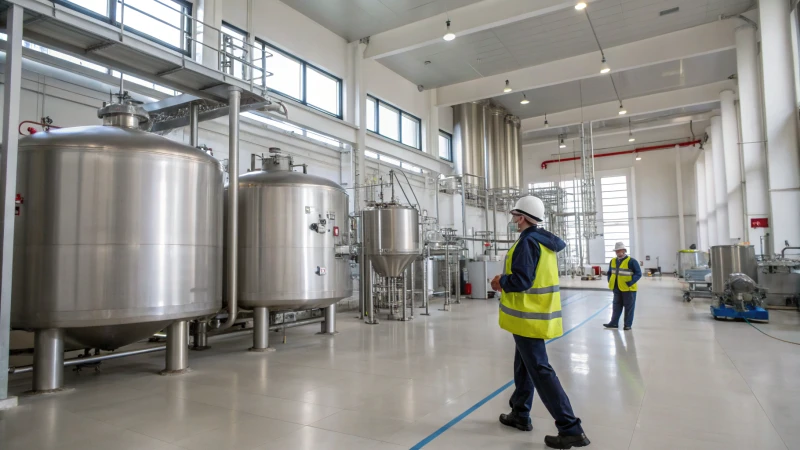
Evolving Production Techniques
The landscape of titanium dioxide production is changing. These changes greatly influence our industry. Observing these shifts is truly fascinating. When I first joined this field, traditional methods received much attention. Now, the focus turns to innovative techniques. These methods increase efficiency and match our strong commitment to sustainability. This is a big shift.
You can explore more on this topic by checking out production methods6.
Market Dynamics and Growth Forecasts
The titanium dioxide market is witnessing robust growth driven by increasing demand from various sectors, particularly coatings and plastics. According to recent market research, the TiO2 market is projected to grow at a CAGR of over 5% through 2025. Factors such as rising construction activities and automotive production in emerging economies are expected to fuel this growth.
For deeper insights, consider looking into market forecasts7.
| Region | Growth Rate (CAGR) | Key Applications |
|---|---|---|
| North America | 4.5% | Coatings, Plastics |
| Europe | 5.2% | Construction, Paper |
| Asia | 6.0% | Cosmetics, Paints |
Emerging Players in the Market
While established companies like Tronox and Chemours dominate the titanium dioxide landscape, emerging players from Asia are making significant inroads. Companies such as Lomon Billions are expanding their footprint globally, leveraging competitive pricing and advanced technology. This shift may alter traditional supply chains and pricing strategies in the near future.
To learn more about these emerging players, check out new entrants8.
Environmental Regulations and Compliance
With increasing scrutiny on environmental impact, titanium dioxide producers are under pressure to comply with stricter regulations. These regulations drive innovation in cleaner production processes and waste management practices, compelling manufacturers to invest in technologies that enhance sustainability. The focus on eco-friendly products is becoming essential for market competitiveness.
Explore further details about regulations affecting TiO2 production in environmental standards9.
[claim claim=”The chloride process is more efficient than the sulfate process.” istrue=”true” explanation=”The chloride process minimizes waste and energy consumption, making it a more efficient production method compared to the sulfate process.”]
[claim claim=”Titanium dioxide market is expected to grow at 5% CAGR through 2025.” istrue=”true” explanation=”Market research indicates that the titanium dioxide market will grow at over 5% CAGR, driven by demand in coatings and plastics.”]
How Does Global Demand Affect Titanium Dioxide Pricing?
Curious about how the world influences the cost of everyday items like titanium dioxide? This is a fascinating topic. Different things around us impact prices. Various industries feel this effect. My industry feels it too.
Global need really affects titanium dioxide prices. Fluctuations connect to production capacity and local market requirements. Industries such as coatings and plastics are growing. Understanding these changes is very important for informed buying choices. Making smart purchasing decisions needs this knowledge.
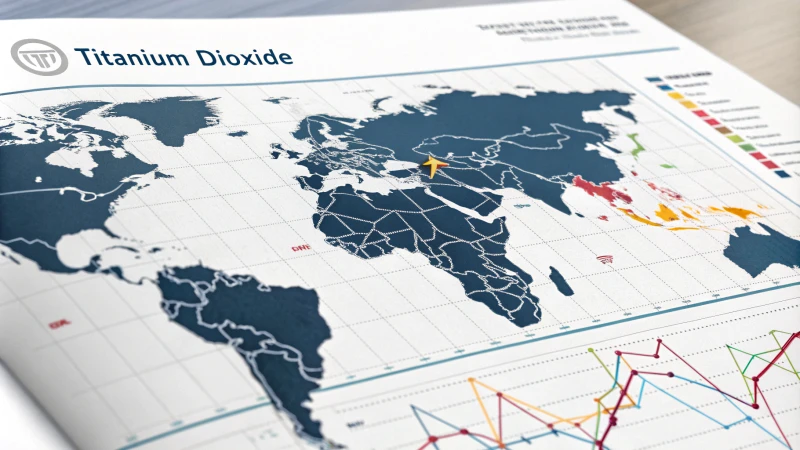
The Dynamics of Supply and Demand
The pricing of titanium dioxide (TiO2) is heavily influenced by global demand dynamics. As industries like coatings, plastics, and cosmetics grow, so does the need for TiO2, which acts as a pigment and opacifier. The relationship between supply and demand can be seen through fluctuations in pricing, often reflecting broader economic conditions. For instance, when construction activity surges, the demand for TiO2 in paints and coatings increases, leading to higher prices.
Additionally, supply chain factors such as production capacity, geopolitical influences, and shipping costs play significant roles in determining pricing. Countries like China dominate production, contributing to competitive pricing strategies. Understanding these elements can help stakeholders navigate market changes effectively.
Regional Demand Variations
Different regions experience varying levels of demand for TiO2. In North America and Europe, the market is driven by the construction and automotive sectors. Conversely, Asia, particularly China, has witnessed rapid industrialization, which spikes demand for TiO2 in multiple applications.
| Region | Key Industries | Impact on Demand |
|---|---|---|
| North America | Construction, Automotive | Steady growth in demand due to infrastructure projects. |
| Europe | Coatings, Plastics | Increasing focus on sustainability drives demand for high-quality TiO2. |
| Asia | Industrial Production | Rapid urbanization creates a surge in demand across various sectors. |
This table highlights how regional demands can affect TiO2 pricing differently, emphasizing the need for manufacturers to adapt to localized market conditions.
Price Sensitivity in Global Markets
Price sensitivity varies significantly across different markets. For instance, companies in emerging markets may prioritize cost over quality when sourcing TiO2, while established industries in developed countries often seek premium products despite higher prices.
Understanding the price elasticity in various markets can provide insights into how global demand affects overall pricing strategies. A balanced approach that considers both cost control and quality assurance is crucial for long-term success in this industry.
Future Projections and Trends
Looking ahead, several trends are likely to shape the future of TiO2 pricing. The shift towards eco-friendly products may influence demand patterns as companies increasingly seek sustainable alternatives in their manufacturing processes. Innovations in production technology may also impact supply levels affecting pricing dynamics.
For more information on these trends and how they could influence your purchasing decisions, consider exploring market analysis reports10. Understanding these evolving factors will be essential for anyone involved in industries reliant on titanium dioxide.
[claim claim=”Global demand for TiO2 is influenced by construction activity.” istrue=”true” explanation=”Increased construction leads to higher demand for TiO2 in paints and coatings, impacting prices.”]
[claim claim=”Emerging markets prioritize quality over cost for TiO2 sourcing.” istrue=”false” explanation=”Companies in emerging markets often focus on cost, affecting their TiO2 purchasing decisions.”]
Conclusion
Explore key titanium dioxide manufacturers like Tronox and Chemours, their industry impact, applications, quality control practices, and market trends shaping the future of TiO2.
-
Explore detailed insights about how titanium dioxide is utilized across different industries and its benefits in each application. ↩
-
Learn about the role of titanium dioxide in enhancing product quality in the plastic manufacturing process. ↩
-
Discover how titanium dioxide contributes to improving paper quality and printing characteristics. ↩
-
Understand the significance of titanium dioxide in cosmetic formulations and its benefits for skin care. ↩
-
Explore this link to discover detailed practices employed by TiO2 manufacturers that guarantee top-notch product quality. ↩
-
Gain insights into cutting-edge production techniques and market forecasts that can influence your strategic decisions. ↩
-
Understand the growth dynamics of the TiO2 market and how they impact supply chains. ↩
-
Discover how emerging players are changing the competitive landscape of titanium dioxide manufacturing. ↩
-
Stay updated on environmental regulations affecting titanium dioxide production processes. ↩
-
Clicking here will provide you with comprehensive market insights that can help you make informed purchasing decisions regarding titanium dioxide. ↩




